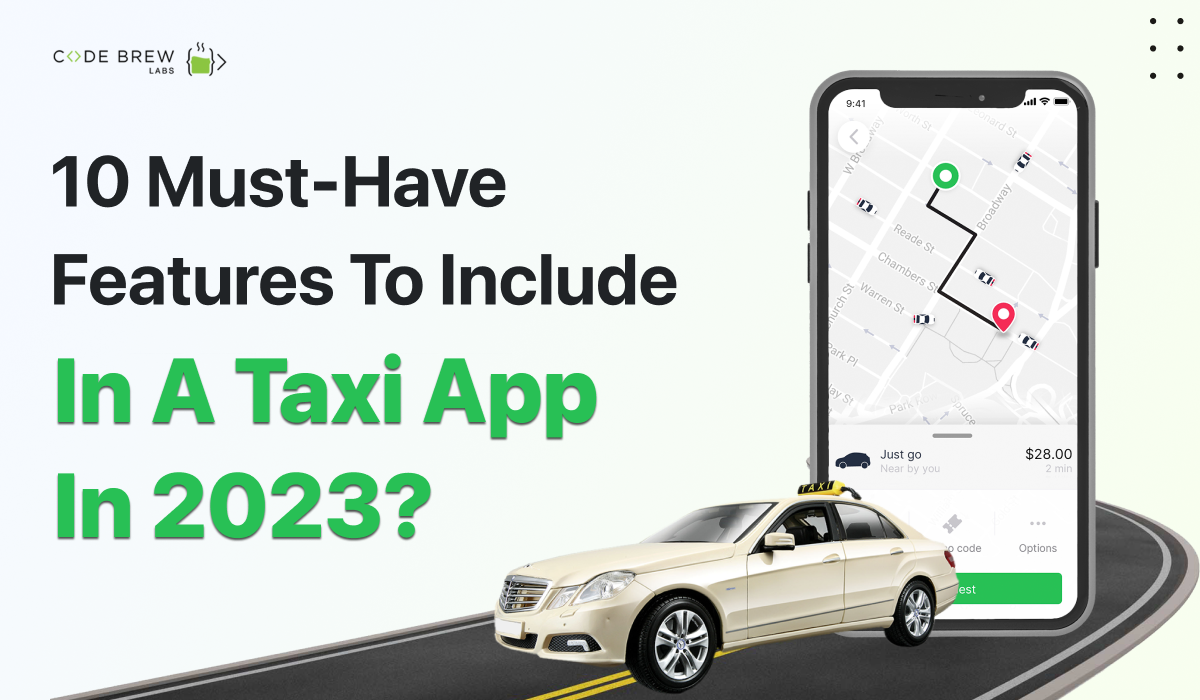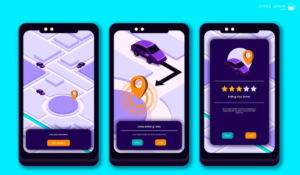
Shared economy, asset-light business model, and on-demand service provision joined hands with mobile apps, giving us Uber – the most popular on-demand cab service. Since then, many entrepreneurs have realized the potential of this business model. If you follow the current rideshare app insights, the global ride-hailing industry has a market size of worth $85.8 billion in 2021. Growing at a CAGR of 16.6%, it is expected to reach $185.1 billion by 2026.
The online taxi booking industry has also paved a prolific path for many Uber like business models, giving us brands like Foodpanda (online food ordering and delivery), UrbanClap (on-demand home services), and many more.
While almost every aspiring entrepreneur who wants to go asset light chooses to launch a taxi app, there’s one important factor that they need to think through thoroughly – app features. It’s the features that hold the power to attract new users and also retain the existing user base.
Let’s take a look at all the features to integrate into the taxi booking app development process.

A complicated sign-up page design or structure can come across as counter-productive. It should be as simple and sophisticated as possible. While sophistication is a crucial factor, it should also convey all the critical information such as the customer’s name, contact number, email-id, and phone number.
A hassle-free signup form gets your customers registered quickly and easily. In addition, this is also a stage where the user experience starts in real-time. A signup form that offers a great user experience work wonders to improve customer loyalty.
A search bar allows users to choose the pickup location and the drop point, and a scheduler to help them select a desired pickup date and time. Integrate a map on the home screen to help them pinpoint a location or choose a landmark.
If you want to create a taxi booking app, this is a crucial element you need to deliver an amazing user experience. Make sure nothing should feel like solving a puzzle for your users while booking an app.
GPS helps pinpoint the exact location of the customer. The designated driver will know where to pick the customer up. In addition, it facilitates hassle-free cab booking and also becomes beneficial for customers in an unknown city/location.
Naturally, GPS tracking proficiency eliminates the need to put the pickup & destination location, making a taxi booking an easy process.
Nobody wants to feel stranded on a road, waiting for a cab, wondering when it will arrive. A real-time cab tracking system keeps the customers aware of each stage of the journey. From tracking the driver’s current location to the estimated time of arrival, cab status ensures that customers can wait comfortably.
And not just that. The cab status also tells the cab’s number, driver’s name, and phone number which further allows customers to coordinate more efficiently. In return, this ultimately enhances user experience.
We all have certain places that we frequently commute to, don’t we? Many people prefer a cab to commute from home to the office, and back. Marking these two locations as favorites will take away the needless effort of putting these locations every time a customer wants to commute.
Similarly, letting the customers create a list of favorite locations facilitates faster bookings. It also helps in improving brand loyalty, something every entrepreneur strives for during Uber like taxi app development.
From the good old cash payments to credit/debit cards to mobile payment gateways, give your customers plenty of options to pay for the ride. Make sure your app creates an automated invoice, educating the customer about the payment details such as gross amount, taxes, discounts applied, and net payable amount.
A transparent payment structure builds trust among your customers. The more your customers trust you, the more they’ll like to use your services in the future. Do consult with your hired app development company Dubai UAE about the list of payment options they will integrate into the app.
Now, if you are interested to know how to choose the best app development company, watch our video
Apart from letting a customer choose a vehicle of their choice, you must also avail your customers an option to select special vehicles. This includes a variety of vehicles with child safety gear, wheelchair-accessible vehicles, and so on.
Addressing these special needs will make a lasting impact on our customers. This lets your users know that your business truly cares for them – which allows you to leverage the most powerful marketing method: word of mouth.
Again, make sure your mobile app development company UAE includes this feature in your Uber clone app.
Now, this brings us to our next point!
No app is complete without a review and rating system. Reviews help your customers make a more informed decision. Rating your cab service on the basis of the driver’s behavior, ride quality, vehicle condition, and overall traveling experience improves credibility.
What customers have to say about you holds more weight than what you claim.
Your taxi booking app should be equipped with an emergency number that a customer can call on should the need arise. From a security point of view to sudden vehicle breakdown, there are many reasons why a customer will need to contact taxi services. And make sure your emergency helpline is prompt.
Order history allows customers to keep a track of their traveling expenses incurred while using your taxi app. It also helps them track a vehicle in case of any belonging left behind in a cab.
People traveling on their employer’s budget often require invoice details from taxi services. In such a scenario, a feature like ‘Order History’ naturally becomes an essential feature to have in taxi app development.
There you go! The 10-point checklist mentioned above packs all the necessary points your taxi app should have. In addition, you can also include an FAQ section where you can answer all the general queries of your customers, a navigational tutorial for first-time users, and a customer onboarding process that can enhance the user experience by many folds.
Now, it’s true that your app will only be as efficient and successful as the features it packs. However, there’s a catch!
Even when you integrate the taxi booking app with some valuable features, it also raises the overall development cost of the taxi app. Try not to clutter it with excess features. Only include the features that are required as per your USP of a Uber clone app.
